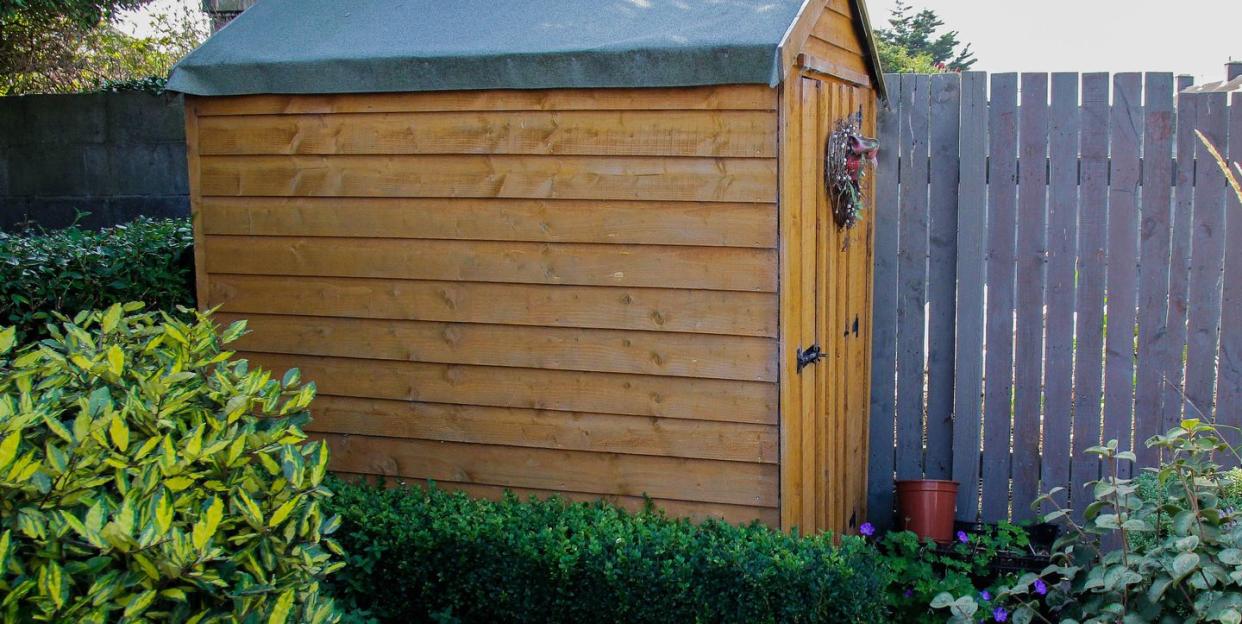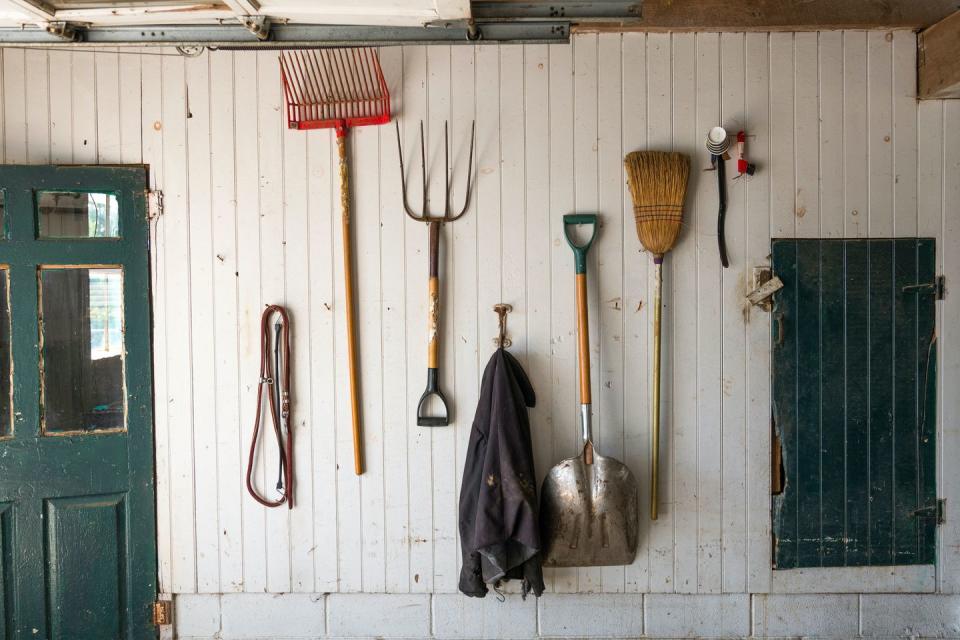How to avoid a mouldy shed this winter

Our sheds and outdoor buildings need just as much love and attention as the rest of our garden, particularly during these cold, damp and blustery winter months.
If they're not properly protected and looked after, wooden sheds can easily deteriorate and start to show signs of wear and tear, which is far from ideal if they are being used for storage. Here's some advice to stop your shed from developing damp and mould.
1. Treat your timber regularly
Many sheds come untreated, so it's important to treat the wood initially, and then on a yearly basis thereafter. This is to protect the exterior against any harsh weather and to avoid wood rot.
'Oil-based treatments will provide surface level UV protection, while pressure treating the wood provides a deeper protection to stop bugs and fungus,' say the team at Garden Buildings Direct. 'Over time many types of wood will start to crack and shrink so filling imperfections with a suitable wood filler can keep the damp away.'
2. Remove damp items
Perishable items like paper, cardboard and material should be kept off the floor and walls of your shed, as this will prevent them from sucking any moisture out of the timbers. Since timber likes to breathe, ensure you allow space for the air to circulate well.
3. Seal windows and doors
The windows and doors are weak points for draught. As a result, you'll want to inspect window and door frames for any cold air that may be wafting through the gaps. Sealing them both inside and outside is your best bet. You can also install foam weather stripping insulating tape for added warmth.
4. Insulate properly
Insulation helps to regulate the temperature of a shed, and without it, cold surfaces can get wet.
'Basic insulation with a reflective surface is more than sufficient at keeping the heat inside,' advises Garden Buildings Direct. Solid foam insulation is a more expensive option but is more effective for sheds that will be inhabited during the winter, compared to those that will mainly be used for storage.
5. Invest in quality storage

Having a storage shed can be a very useful addition to your home, but make sure you invest in weatherproof bins and units to keep items safe. Leaving tools exposed, for example, could lead to corrosion.
6. Keep air circulating
Ventilating your shed provides proper airflow. 'If your shed doesn't have vents installed already, opening the windows and doors every few days helps to stop the air from stagnating and causing damp spots,' explain the experts at Garden Buildings Direct.
7. Check the roof
The roof is more often than not the primary cause of any leaks within a shed but it's relatively easy to maintain and repair. Regularly clean this top surface to avoid the build up of debris and to stop holes from forming.
8. Consider using a heat source
Utilising an efficient heat source (like a mains powered heater) is one way of actively reducing the moisture levels in a shed. Gas operated heaters, on the other hand, are not advisable as they actually push out more moisture and therefore don't help to combat the damp. If mains power isn't accessible, using a small disposable dehumidifier can be a good alternative. Although a dehumidifier won't heat the shed, it'll help to draw the moisture from the air and stop any mould from growing.
Follow House Beautiful on TikTok and Instagram.
You Might Also Like



